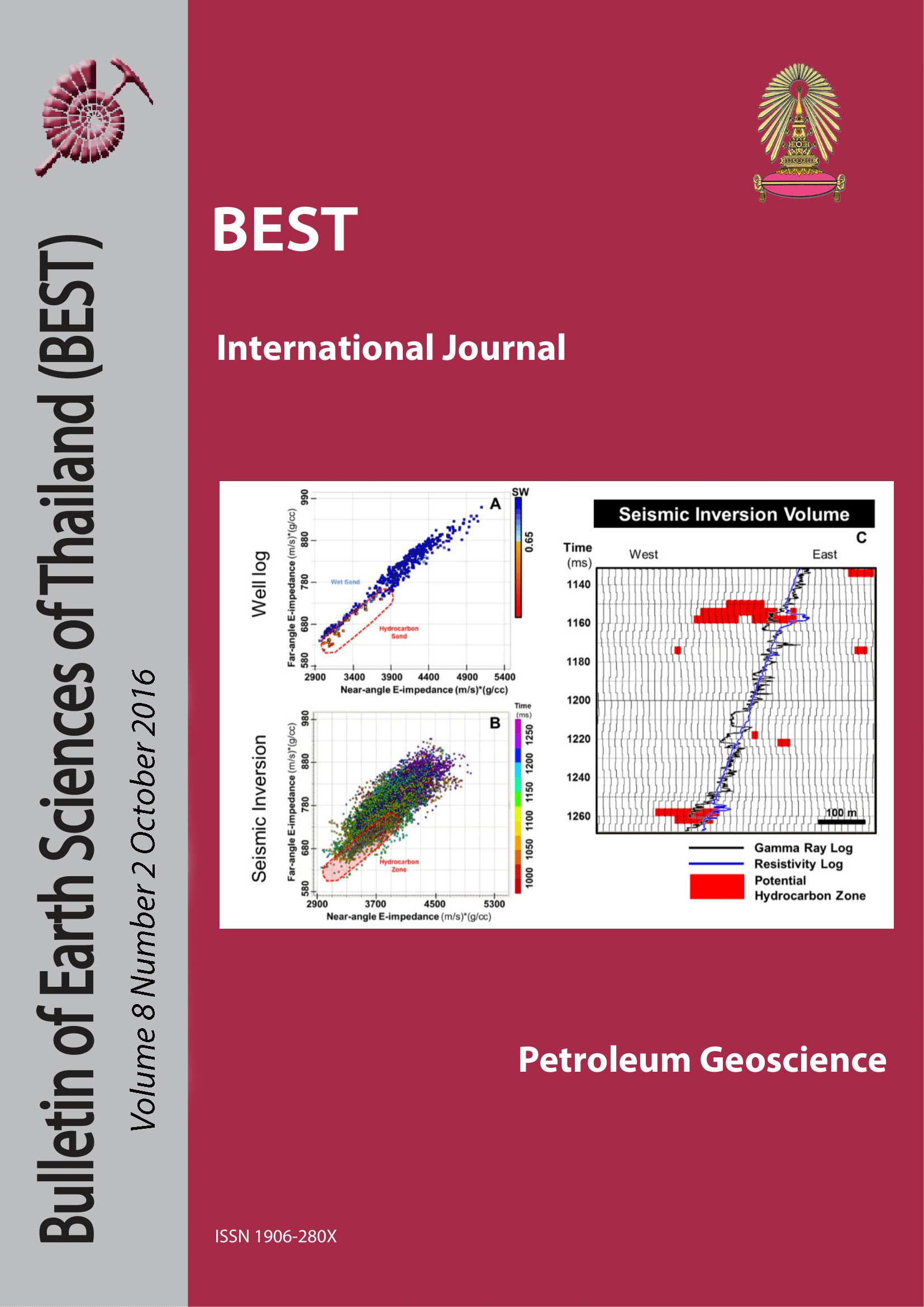CHARACTERIZATION OF POROPERM DEVELOPMENT IN APALEOZOIC CARBONATE RESERVOIR ANALOG, NORTHERN VIETNAM
Main Article Content
Abstract
In offshore northern Vietnam, a number of vertical wells have been drilled to test “buried-hill” plays in fractured Devonian carbonates, sealed by shale. So far, there has been little success, with either dry holes, or wells showing low subeconomic rates of return when tested. So the question that needs to be answered for this play type is: why did they fail and how can we target more successfully in this play type? A detailed geological characterization of fractured Devonian carbonates was undertaken in a quarry outcrop (20058’40’’N latitude and 106041’43’’E longitude) in the Thuy Nguyen district of Northern Vietnam. This work integrates the results of detailed mapping and interpretation of lithologies and fracture orientations, along with detailed petrographic and isotopic analyses and leads to the following conclusions. (1) Significant levels of poroperm in fractured Devonian carbonates in the region are mostly confined to NE-SW fracture sets created and enlarged in the telogenetic realm; fracture trend relates to uplift in a stress field created by movement of the Red River Fault. (2) Equivalents to this style of diagenesis likely occur in subsurface as potential fractured Devo-nian reservoirs in the nearby offshore. (3) Successfully exploring and developing such reservoirs will require directional (not vertical) wells and a better rock-based understanding of the controls, orientations, timings of major fracture events (requires outcrop and core-calibrated FMI interpretation). (4) Poroperm predictions in subsurface counterparts require an improved understanding of fluid evolution and the relative timing of the various diagenetic events that can occlude or enhance porosity and permeability in both matrix and fractures (requires detailed petrographic study tied to texture-aware isotope sampling of cuttings or core).
Article Details

This work is licensed under a Creative Commons Attribution-NonCommercial-NoDerivatives 4.0 International License.
Copyright © 2008 Department of Geology, Faculty of Science, Chulalongkorn University. Parts of an article can be photocopied or reproduced without prior written permission from the author(s), but due acknowledgments should be stated or cited accordingly.
References
Ahr, W. M., 2008, Geology of carbonate reservoirs: the identification, description, and characterization of hydrocarbon reservoirs in carbonate rocks: Hoboken, N.J., Wiley InterScience, 277 p.
Allan, J.R., Matthews, R.K., 1982, Isotope signatures associated with early meteoric diagenesis: Sedimentology v. 29, p. 797 –817.
Cuong, T.X, et al., 2013, Hydrocarbon Systems in the North-eastern Area of the Song Hong Basin: Journal of Earth Science and Engineering, v. 3, p. 807-814.
Ebner, M., Piazolo, S., Renard, F., Koehn, D., 2010, Stylolite interfaces and surrounding matrix material: Nature and role of heterogeneities in roughnes sand microstructural development: Journal of Structural Geology, v. 32, p. 1070-1084.
Heydari, E., 2000, Porosity Loss, Fluid Flow, and Mass Transfer in Limestone Reservoirs: Application to the Upper Jurassic Smacko ver Formation, Mississipi: Bulletin American Association of Petroleum Geologists, v. 84, p 100-118.
Hoang, N.V., Duc, N.V., A study of fractured carbonate in Blocks 102-106 by wireline logging: Journal of Oil and Gas, v. 11, p. 23-28.
Land, L. S., 1982, Dolomitization: AAPG course Notes, v. 24, p. 1-20.
Loucks, R.G., 1999, Paleocave carbonate reservoirs : origins , burial - depth modifications, spatial complexity, and reservoir implications: J. Sediment. Res, v. 83, p. 1795–1834.
Mishari Al-Awadiet et al., 2009, Dolomite: Perspective on Perplexing Mineral, Oilfield review Autumn 2009, v. 21, no.3, p. 32-45.
Moore, C. H., and W. J. Wade, 2009, Carbonate Reservoirs (2nd Edition); Porosity and diagenesis in a sequence stratigraphic framework, Elsevier, 392 p.
Michael B. W. F., Lars H. N., Lars O. B., 2007, Cenozoic evolution of the Vietnamese coastal margin: Geological Survey of Denmark and Greenland Bulletin, v. 13, p. 73–76.
Nelson, C. S., and A. M. Smith, 1996, Stable oxygen and carbon isotope compositional fields for skeletal and diagenetic components in New Zealand Cenozoic nontropical carbonate sediments and limestones: a synthesis and review: New Zealand Journal of Geology and Geophysics, v. 39, p. 93-107.
Nielsen, L.H. et al, 1999, Modelling of hydrocarbon generation in the Cenozoic Song Hong Basin, Vietnam: a highly prospective basin: Journal of Asian Earth Sciences, v. 17, p. 269–294.
Walls, R.A., Burrowes, G., 1985, The role of cementation in the diagenetic history of Devonian reefs, western Canada. In: Schneidermann, N., Harris, P.M. (Eds.), Carbonate Cements: SEPM Sp, v.36, p. 185–220.
Warren, J. K., 2000a, Dolomite: Occurrence, evolution and economically important associations: Earth Science Reviews, v.52, p. 1-81.
Warren, J., C. Morley, T. Charoentitirat, I. Cart wright , P. Ampaiwan , P. Khositchaisri, M. Mirzaloo, and J. Yingyuen, 2014, Structural and fluid evolution of Saraburi Group sedimentary carbonates, central Thailand : A tectonically driven fluid system: Marine and Petroleum Geology, v. 55, p. 100-121.
Wright, V.P., 1991, Paleokarst: types, recognition, controls and associations. In: Wright, V.P., Esteban, M., Smart, P.L. (Eds.), Paleokarst and Paleokarstic Reservoirs: Univ. Reading, Postgrad. Inst. Sedimentol., v. 152, p. 56–88


